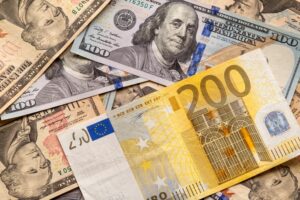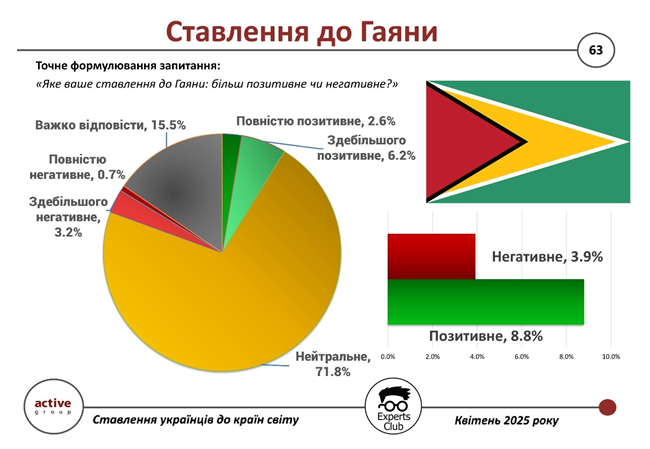
Insurance company Euroins Ukraine (Kyiv) increased its authorized capital to UAH 123.065 million through an additional issue of shares worth UAH 45.125 million.
According to information provided by the insurer in the National Securities and Stock Market Commission’s disclosure system, this is stated in the report on the results of the share issue without a public offering, approved by the supervisory board on March 21, 2025.
According to the report, 4.513 billion shares with a par value of 0.01 UAH were placed during the issue.
Euroins Ukraine is a universal insurance company that has been operating in the Ukrainian market since 1992. It is part of the Bulgarian insurance group Euroins, which is one of the largest independent insurance groups operating in Central, Eastern, and Southeastern Europe.

Issue No. 1 – May 2025
Analysis of the current situation on the Ukrainian currency market
In early May, the Ukrainian currency market entered a phase of controlled volatility, with no excessive demand but heightened speculative expectations.
Overall, the situation remains relatively stable in the US dollar segment and tense in the euro segment.
Key facts and drivers:
Ø The dollar continues to trend downward, pressured by global rhetoric about Fed rate cuts and risks of stagnation in the US economy.
Ø The euro, on the contrary, continues to rise in price due to the European currency’s economic strength, pent-up demand for imports, and structural changes in currency preferences and preferences of businesses and the population toward the euro.
Ø The spread between the buying and selling of the euro remains at an abnormally high level of 1.5–2 UAH, signaling increased nervousness among market operators and expectations of further movement.
Internal factors
Ø The NBU continued its policy of cautious easing of currency restrictions in May: certain forward transactions for banks and clients were resumed, and the possibilities for financing foreign representative offices of companies and settlements with corporate cards abroad were expanded. At the same time, the monthly limit of UAH 500,000 was extended to more categories of transactions, which will partially reduce the attractiveness and weight of “gray” channels for capital withdrawal. This will add transparency to the market, and foreign exchange market statistics will become more representative due to the accurate and complete reflection of information on currency movements.
Ø At the same time, the NBU’s foreign exchange reserves rose to a record $46.7 billion (+10.1% in April) thanks to funds received from the EU (ERA Loans program) and the World Bank. The reduction in the volume of NBU interventions and net currency purchases by the population strengthened stability on the interbank market and helped keep the official and market exchange rates within the forecast range.
Ø The approaching tax payment period, as well as seasonal intensification of operations in the energy sector and imports of energy carriers, will add liquidity to the market, but are unlikely to lead to significant exchange rate fluctuations provided that key current conditions remain unchanged.
Ø Consumer inflation began to slow down in April, and the NBU expects it to fall to single digits as early as summer. This reduces pressure on the hryvnia, but the level of core inflation and the risks of a tariff shock remain compelling arguments against premature relaxation.
International factors
Ø At the global level, the situation remains ambiguous. The Fed has not changed its key rate, but continues to exchange information cautiously, given inflation risks, unemployment, and the threat of stagflation due to the Trump administration’s tariff policy. The “soft landing” scenario remains the baseline, but unwavering global confidence in the dollar is gradually eroding.
Ø At the same time, the euro is consolidating as a currency increasingly used in global trade. The potential strengthening of the EU’s political center, the acceleration of economic growth in the eurozone, the increase in consumption of European products in Ukraine, and the transition of many contracts to the euro are creating stable long-term demand.
Ø Stock and commodity markets are showing cautious optimism, with investors locking in profits after news of a possible deal between the US and the UK, as well as taking into account the likely resumption of negotiations and at least a temporary halt to Russian fire against Ukraine. However, market volatility remains high, with the global news background not conducive to predictability and stabilization.
Overview of currency dynamics and forecast
US dollar exchange rate: dynamics and analysis
In May, the dollar continued to trade in a relatively narrow range against the hryvnia, showing slight volatility and stable demand. The hryvnia gradually strengthened at the beginning of the month.
The exchange rate in the cash segment remained within the range of UAH 41.00–41.90/USD over the last four weeks, peaking on April 30, when the average selling rate in banks reached UAH 41.89/USD and the buying rate reached UAH 41.21/USD. This movement was fully synchronized with the official NBU exchange rate, indicating that the regulator’s policy is in line with market realities.
At the same time, average spreads between buying and selling rates remain stable (within 60–70 kopecks), without significant expansion, confirming the balance in the currency market and sufficient competition among its operators, particularly in the cash segment.
On the interbank market, the volume of foreign exchange transactions decreased, but the NBU’s interventions also declined, which suggests that the market is partially self-balancing without excessive involvement of the regulator.
Technical and psychological support for the market is provided by the growth of international reserves to $46.7 billion (+10% in April), which creates an additional buffer for the “managed flexibility” policy.
At the global level, the dollar remains under pressure due to fears of stagflation in the US economy. The Fed’s unchanged rate and Jerome Powell’s statement that there are no sufficient grounds for a rate cut in the near future are holding back the dollar’s decline, but are not creating preconditions for its strengthening. This situation does not create strong external pressure on the hryvnia exchange rate.
Forecast for the near term:
Ø Short term (2–4 weeks): the exchange rate will remain within the range of 41.20–41.80 UAH/USD with local fluctuations of ±20 kopecks under the influence of situational factors, provided that the current circumstances remain unchanged.
Ø Medium term (2–4 months): the exchange rate may remain stable or shift to 41.80–42.50 UAH/USD under the influence of moderate devaluation. The stabilization of the security situation could become a serious psychological factor influencing the market, driving consumption and stimulating business recovery.
Ø Long term (6+ months): the trend towards a slow devaluation of the hryvnia remains, as do its underlying factors, especially given the projected decline in international aid in 2026 and the increase in the budgetary burden. The target range is UAH 43.00–45.00/EUR in the event of the least favorable scenario.
Euro exchange rate
The euro exchange rate against the hryvnia in April and the first ten days of May showed a clearly volatile trajectory. Starting from April 15, the euro rose steadily, reaching a peak of 48.14 UAH/EUR at the end of April. This was the highest level in the last six months. After that, the market began to correct itself, and by mid-May, the euro had fallen back to 47.10 UAH (selling) and 46.20 UAH (buying).
The spread between buying and selling rates in the cash segment narrowed from 2 UAH to 0.6-1 UAH by mid-May, which is an important indicator of a decrease in nervousness and unpredictability of the exchange rate, as a result of which market operators stopped including increased risk and agitation premiums in their quotations.
Currently, market operators are still leaving themselves room for maneuver in anticipation of further fluctuations in the euro, as indicated by the slight lag of the official exchange rate behind real market quotations. The spread between the euro’s buying and selling rates is roughly equal to the NBU rate at 30-40 kopecks, which, if the trend continues, may indicate that currency market operators in all segments expect the euro to fall in the coming weeks.
The slowdown in the US economy, high uncertainty in negotiations on international customs agreements, volatility in the stock and commodity markets, and the rhetoric of the Fed all play in favor of the euro as a relatively stable alternative to the dollar, both globally and locally in Ukraine.
Forecast
Recommendations for businesses and investors
In light of the growth of the NBU’s reserves, the decline in consumer inflation, the stabilization of the dollar market, and the continued volatility of the euro/hryvnia pair, currency risk management strategies should be reviewed.
1. Liquidity is paramount.
The coming months will remain a period of controlled volatility. The primary task is to ensure quick access to foreign currency funds in any scenario. Long-term deposits, illiquid assets, and single currency exposure increase risks. All instruments should be subject to prompt review or withdrawal.
2. Adjust the share of the euro.
After rapid growth and peak values at the end of April, the euro entered a correction phase. The potential for growth remains in the medium term, but now is not the time for active position building. New exchange rate impulses should be closely monitored to avoid risks and choose the right moment for new transactions.
3. Currency interventions are a marker of stability.
The volume of NBU interventions is a sign of the market’s ability to self-regulate and maintain balance. Focus on exchange rate ranges without emotional reactions to news: the market is becoming less responsive to isolated information leaks and has developed a certain immunity to them.
4. Do not stick to fixed currency “rules.”
The hryvnia remains at risk of devaluation, but in the short term, the exchange rate is stable. This is not a reason to get rid of dollars, but it is also not a reason to buy currency en masse. Switch to scenario planning: 3–4 alternative scenarios with adaptive asset allocation for each of them.
5. Be cautious in short-term speculation.
Especially in the EUR/UAH pair. Even if the euro falls to 47 UAH, the margin is too small for comfortable trading. The potential return does not match the market risks without precise timing and liquidity. Most players are better off refraining from short bets.
6. Control the share of hryvnia.
Despite the stability, it is not worth accumulating excess hryvnia liquidity. Anything above the functional amount should be immediately transferred to instruments with a fixed exchange rate (for example, to a multi-currency structure or reserve).
7. Monitoring spreads is a new skill.
In the euro market, it is spreads, not absolute exchange rates, that have become the main indicator of nervousness and expectations among operators in recent weeks. They are more useful for forecasting than the exchange rate itself. In the event of a sharp expansion, it is better not to enter the currency, and in the event of a contraction, you should look for a comfort zone for placements or short maneuvers.
This material has been prepared by the company’s analysts and reflects their expert, analytical, and professional judgment. The information presented in this review is for informational purposes only and should not be considered a recommendation for action.
The company and its analysts make no representations and assume no responsibility for any consequences arising from the use of this information.
All information is provided “as is,” without any additional guarantees of completeness, timeliness, or updating or supplementation. Users of this material should independently assess the risks and make informed decisions based on their own assessment and analysis of the situation from various available sources that they themselves consider sufficiently qualified.
Before making any investment decisions, we recommend consulting with an independent financial advisor.
REFERENCE
KYT Group is an international multi-service FinTech company that has been successfully operating in the non-bank financial services market for 16 years. One of the company’s flagship activities is currency exchange. KYT Group is one of the largest operators in this segment of the Ukrainian financial market, is included in the list of the largest taxpayers, and is one of the industry leaders in terms of asset growth and equity capital.
More than 90 branches in 16 major cities of Ukraine are located in convenient locations for customers and are equipped with modern equipment for the convenience, security, and confidentiality of each transaction.
The company’s activities comply with the regulatory requirements of the National Bank of Ukraine. KYТ Group adheres to EU standards of operation, with branches in Poland and plans for cross-border expansion into other European countries.

The multimodal terminal of the Fiska-Nov company will be launched in the territory of the Hlybotska community (Chernivtsi region), near the border with Romania, the community’s press service reported.
“The launch of this terminal will be an important step in the development of transport infrastructure, increase the transit potential of the region, and contribute to economic growth at both the local and national levels. In addition, its location near the border with Romania gives it strategic importance for transportation between Ukraine and the European Union,” the community said.
The facility’s infrastructure includes six railway tracks and special equipment that allows for transshipment between Ukrainian 1,520 mm gauge and European 1,435 mm gauge railcars. The terminal will also accept cargo by road. The purchased and installed load cells are designed to ensure accurate weight control of cargo during loading and unloading.
The Fiska-Nov company plans to create about 100 new jobs.
Oleg Nivievsky, Chairman of the Center for Food and Land Use Research at the Kyiv School of Economics, praised the community’s initiative on Telegram, which took advantage of the feasibility study developed by KSE in 2023 for the construction of a dry port on the border with Poland.
“The result was quite unexpected but pleasant — such projects are economically viable even without state support. Why is this important? Because improving and increasing the capacity of communications with the EU is a kind of insurance against a ‘crazy’ neighbor. In other words, it is something that can be supported with taxpayers’ money, but here the result is that everything looks good without support,” the scientist summed up.

According to the results of a survey conducted by Active Group in collaboration with the information and analytical center Experts Club, the vast majority of Ukrainians do not have a formed opinion about Guyana — 71.8% chose the neutral option.

A positive attitude was expressed by 8.8% of respondents: 6.2% said “mostly positive” and 2.6% said “completely positive.” In contrast, only 3.9% expressed a negative attitude (of which 3.2% said “mostly negative” and 0.7% said “completely negative”). At the same time, 15.5% of respondents were unable to answer this question at all.
“Such a high percentage of neutrality and ‘difficult to say’ responses indicates that Ukrainians are very poorly informed about Guyana. This country is almost absent from the Ukrainian information field and is therefore perceived without strong emotions,” comments Oleksandr Pozniy, co-founder of Active Group.
Ukrainians’ attitude toward Guyana remains largely neutral due to the country’s lack of media presence. This is a typical example of a “blank spot” on the geopolitical map in the mass consciousness.
The presentation of the study is available at the link.
ACTIVE GROUP, DIPLOMACY, EXPERTS CLUB, Pozniy, SOCIOLOGY, URAKIN